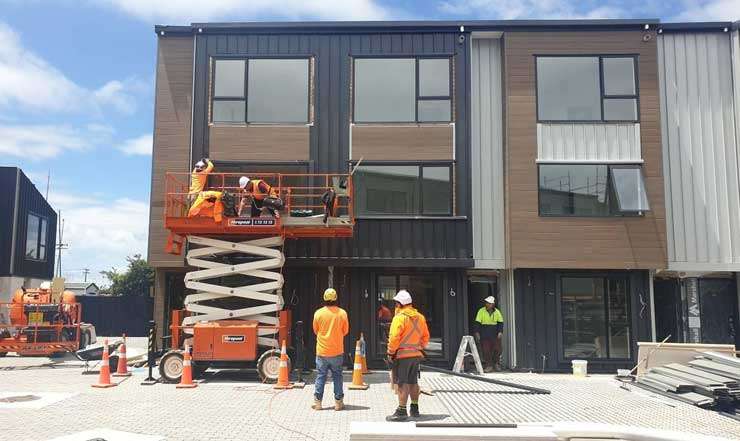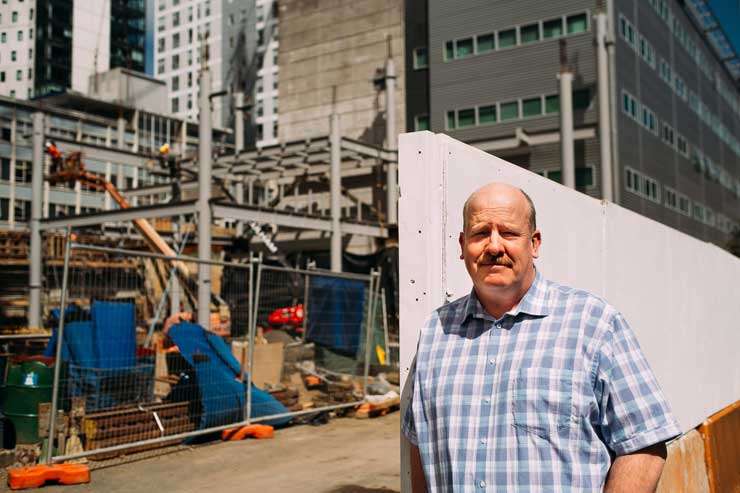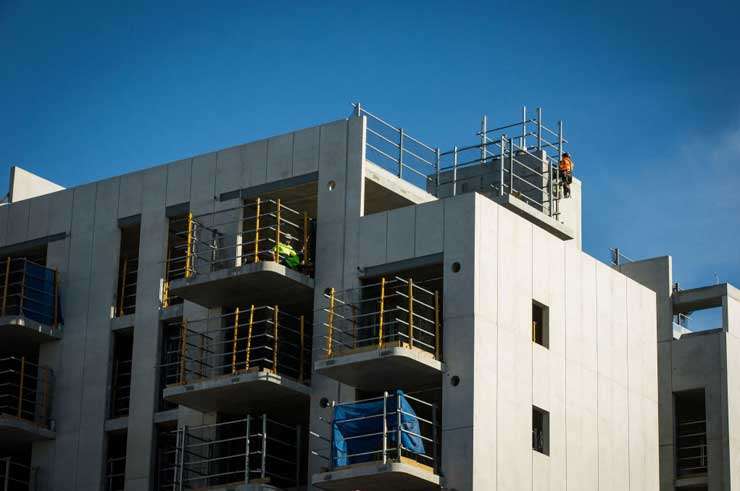The arrival of Omicron will be weighing heavily on the minds of New Zealand’s building firms. In November, OneRoof reported that the spike in construction costs was already putting unprecedented pressure on the construction industry.
Experts warned that smaller firms were at risk of going bust, a scenario that could leave many homeowners and contractors in the lurch.
Since then, the highly contagious Omicron variant of Covid-19 has hit New Zealand, after causing widespread disruption in other countries. In Australia, the spread of the variant has worsened staff and building material shortages for the construction industry.
The industry in New Zealand has already seen a run of collapses. Last month, the New Zealand Herald reported that developer of a new apartment complex in Manurewa, in South Auckland, was put into liquidation, owing unsecured creditors an estimated $2.2 million.
Start your property search
Other recent high-profile casualties include Canterbury house-builder David Reid Homes, which failed owing $1.2m, and West Village Capital Partners, which was put in receivership after its builder Ebert Construction went under.
Insolvency practitioner Iain McLennan, of McDonald Vague, says that while formal insolvency appointments fell late last year, there is likely to be an uptick in 2022.
Typically, there is a lag between a business getting into difficulty and the liquidators/receivers being appointed. The effect of the August lockdown, supply chain challenges and other pressures may still be filtering through.

South Auckland apartments built by developer OD 2019, which was put into liquidation last year. Photo / Supplied
“We are expecting many more formal appointments this year because of the underlying industry issues and now that the Government’s Covid support has significantly reduced,” McLennan says.
While formal appointments for construction and property development fell in December, the industry made up 23% of all appointments that month, making it the single largest industry featured, says McLennan.
Not everyone thinks Omicron will be a knock-out blow to the industry. Professor John Tookey, who heads AUT’s School of Future Environments and is an expert on construction logistics and supply chain management, says Omicron is just one of many challenges builders are facing.
“To understand the position the building industry finds itself in currently, you need to start with much bigger macroeconomic forces. Events such as the Evergrande-led property crisis in China and the stand-off between Russia, the United States and the Ukraine. These have and will have an impact on New Zealand and its building industry.”
Rising inflation and rising interest rates will also take a toll. “We’re already starting to see the downturn associated with raised interest rates. All of a sudden, it’s less cost effective to raise capital. As a result, the rates of housing development and new everything development starts to reduce.”

Professor John Tookey: “If you take out 25% of the workforce, that can break things real quick.” Photo / Supplied
Even if Omicron doesn’t result in mass failures, it’s going to be catastrophic, hitting already wounded supply chains hard, and taking out big chunks of the workforce. Isolation rules mean that entire construction sites could be temporarily closed, says Tookey. “The knock-on effect of the Government’s [isolation] policy is going to be catastrophic. If you take out 25% of the workforce, that can break things real quick.”
Difficulties aside, Tookey points out that there is still demand for builders’ product and he predicts the industry will find a workaround for the absenteeism and other pressures from Omicron. “What happens is companies take more orders and push back start dates so you end up with this back catalogue of work that's due to start at some point in the future.”
At some point the inability to borrow means that the back catalogue of work runs out. “A friend’s son is an apprentice joiner and just got laid off. The rationale was that they [his employer] haven’t got enough work going forward. If that starts to become a trend, you have a problem.”
In a recent report, data analysts Infometrics estimated there would be 12% absenteeism at the peak of the Omicron wave.
The report noted that the sector most likely to be hit hardest was transport, if the Australian experience is anything to go by, and that has a knock-on effect for supply chains and builders.

A construction site in Melbourne. The Omicron variant of Covid-19 has caused high absenteeism in Australia. Photo / Getty Images
Infometrics chief forecaster Gareth Kiernan notes that the construction industry is still booming, so talk of widespread collapses “is a bit counter-intuitive”.
But the industry is under stress thanks to its supply chain and recruitment issues. “Cash-flow issues and expanding beyond your capability can be exacerbated by supply chain issues, the unavailability of labour, and the cost increases you’re facing as well.”
The supply chain is a big issue, says Mortgage Lab founder Rupert Gough. “Developers find that it's not necessarily the big things in development [that’s the problem]. It's the taps in the bathroom that may not be in the port yet. You can't hand over a house without the taps installed.”
Fixed contracts are also causing problems in the industry and construction companies typically bear the brunt of losses when things go wrong, says Kiernan, who believes the industry can survive a two-month interruption from Omicron.
On the residential side of construction, the industry must be nearing the peak, says Kiernan, and building cost inflation running at 16% and expected to rise to over 20% per annum.
“That's really a recipe where suddenly developers are going to (say), ‘what's the chances of me actually being able to sell this property once I've built it in 12- or 18-months' time?’, particularly given the risks of further delays or cost increases. That’s where it starts to link into Omicron particularly around the delays and absenteeism.”

















































































